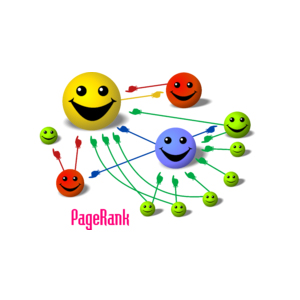
SEO Hide And Seek
 Osama Bin Laden would have made a poor SEO specialist.
Osama Bin Laden would have made a poor SEO specialist.
After all, it took us a decade to find him – apply that stat to any digital marketing business, and you’ve got a recipe for disaster. So what can you do to ensure your business doesn’t follow a similar trend, operating yet unknown in the vast world of the Internet?
SEO! (What?)
Exactly the opposite of what he wanted. Search Engine Optimisation (SEO) is, in many ways, ‘classic’ advertising, with a digital marketing twist. Advertising in general relies on a simple formula: get your name out there, get noticed, and gain business. (You can see why he avoided it!) This is not to say it is traditional in the outbound sense – you’re not actively selling – but you are actively getting noticed. You are incorporating inbound marketing into your digital marketing strategy, weather you realised it or not. At it’s most basic level, think Yellow Pages. A broad index, not geared towards any specific company, but with space for all to be categorised, and easily found when someone needs to.
The Early Days: (Innovation!)
 Google? Never heard of ‘em.
Google? Never heard of ‘em.
SEO has been around pretty much since the beginning. When the Web was first invented, it was highly regulated, and any and all sites were strictly monitored, if only to keep tabs on the growth of the network. However, the methods for indexing were reasonably basic, relying on such incredibly secure methods such as keyword density (Think of it as the guy who shouts loudest gets the lead generation – not great, right?) And easily manipulated Meta tags, meaning that to get traffic, all you had to do was cram as many popular keywords into your header as possible. People will end up on your page, even if it’s completely unrelated to what they wanted. (And, most of the time, this could end up being reasonably awkward… that’s all I’m saying.)
Modern Times (Super-injunction? Of course not…)
Unfortunately for some, (Cough, recent unnamed super-injunctions…) SEO and being found on the Internet has become far easier, meaning that even the smallest start-up can employ a powerful and easy inbound marketing campaign. Many hundreds (then thousands…) of extremely intelligent boffins have been working overtime on methods to clean up the system, making it more efficient, less easy to manipulate, and ensure that any little blogger’s damning statement about who is suing who makes it to the front page, as easily as any marketing agency’s latest research paper. New software, such as PageRank (warning: extremely dense algorithms beyond the first few paragraphs…) allowed a far more fluid, and more importantly, accurate method of organising web pages into search orders. Had PageRank been able to access ole’ Osama’s operations (his inbound and outbound links), we’d have got him in no time. The ranking factors were becoming far less black and white, and becoming slightly more… human. Information, content, and most importantly, links would be checked, rather than a simple checklist of ‘yes’ and/or ‘no’ questions.
How to utilise SEO for your business (Useful!)
As the basics are relatively easy to grasp, incorporating the techniques into your digital marketing campaign is pretty straightforward. Think of the two examples above – Bin Laden wasn’t found for ages. Why? Few links, and those links that did exist were unknown. Super-injunction news spread like wildfire, due to almost every article on the subject now being actively monitored by search engine tools such as caffeine. Both links and content are the key, so utilise these ideas, ensure that you’re articles are available, and link up! Remember that all links serve to bolster the credibility of the page, with links to and from other sites especially useful. Links to and from trusted sites are best, (you want the ‘head honchos’, rather than the lowly messengers… although both serve use.) So think carefully where you want to link to. (Your visitors will also find your choice of link to be either useful or not, so bear that in mind as well.) Keywords can also be placed throughout the page, some of which you will place by accident, bust most on purpose. (For a quick example, have another look over this article so far – it’s centred on SEO, how many instances of those three little letters can you see?)
You can place keywords in the header, in the text, or even as descriptions on any photos/alt text on links (when you hover over them.) Keep them relevant, and don’t overdo it – no one likes a page that uses keywords for misdirection, even if the page itself is brilliant – In fact, this leads me quite nicely to my next topic:
Black Hat vs. White Hat SEO. (Sounds pretty cool, right?)
Unfortunately, it’s not. Sorry. These methods are the two schools of thought within marketing agencies, and refer to methods for applying SEO. My favourite way to explain this succinctly is to refer to the old Wacky Races cartoons, with Dick Dastardly trying to sidestep the actual racing skill to gain first place. Think of white hat techniques as the other racers; they are playing by the rules, thinking about how to get ahead in the race. Their business strategy is based on their skill, and what they can do. Dick Dastardly on the other hand, is playing by the black hat SEO technique. He probably has the skill to win on his own merit, but instead chooses to use underhand methods to become victorious. When considering SEO, this is the equivalent of placing bogus links, misleading or ‘catch-all’ keywords to attract views based not on whom you are trying to get, but what is the most popular topic at the time. Sure, it may work, but as mentioned above, would you prefer to have people that have an interest in your field visiting, or those who have essentially been tricked into arriving? Not to mention that people who are ‘captured’ by this method will most likely not serve as useful for lead generation, and, in all likelihood, could leave with a negative view of you as a marketing company.
This is only the beginning! (Even if we’re at the end of the post…)
Search engines and SEO is a pretty big topic, with many techniques available to maximise the results of your digital marketing campaign, regardless of weather you are a massive marketing agency, or a small start up, simply investigating your new business strategy. SEO can take the place of things such as email marketing or mobile marketing, allowing for a far less aggressive form of digital marketing. This is just a brief introduction to the topic – the tip of the iceberg, if you can forgive the rather clichéd analogy – and as such, far more research and methods are available for discovery and utilisation. This piece is simply a brief introduction, something that you can take basic skills from, or even just have a bit of a background if you’re enrolled in a course, so you don’t feel quite as lost.
Stay tuned for Part 2…
Read the latest positioning trends and insights.
Tap into our brand and product positioning, storytelling, and creative expertise to inspire your next strategic move.
 Osama Bin Laden would have made a poor SEO specialist.
Osama Bin Laden would have made a poor SEO specialist.
